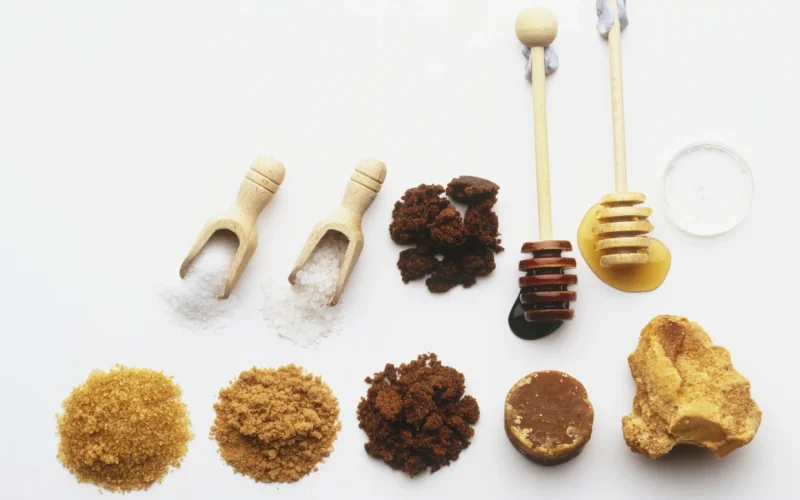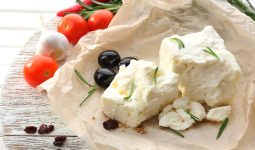As human beings, we generally have a nick for sweet things, especially food. The most common sweetener we know and use is refined sugar.
However, knowing that different types of natural sweeteners exist is essential.
Granulated sugar is the most widely used sweetener in beverages, sauces, and baked goods.
However, sugar consumption is also linked to health problems such as undesirable weight gain and diabetes.
Unsurprisingly, sugar substitutes, mainly natural sweeteners, are in high demand. Numerous natural sugar substitutes are routinely utilized.
But first, it’s crucial to understand that there is no standard or regulated meaning of “natural” in sweeteners.
Fruits such as bananas and dates, for example, are natural. They are entire, unadulterated meals that add sweetness.
On the other hand, sweeteners like stevia, xylitol, and allulose are all naturally occurring, but they are processed and do not contain any nutrition.
Artificial sweeteners such as aspartame, sucralose, ace-K, and saccharin have been the subject of heated controversy for years due to their possibly harmful consequences.
While these sweeteners are officially “safe” and sugar-free, the Food and Drug Administration raises concerns about them.
Their ingestion appears to cause everything from headaches and poor digestion to cravings and even mood issues.
Natural sweeteners, as opposed to artificial sweeteners, are present in nature.
They usually have less calories and sugar but have the same sweet taste.
Whether you’re considering going keto, trying to cut back on refined sugar, or can’t locate your everyday supplies at the supermarket, here are some common types of natural sweeteners for your sugar replacement options.
Different Types of Natural Sweeteners
1. Honey

Raw honey is a superfood and one of the best natural sweeteners. It’s rich in enzymes, antioxidants, iron, zinc, potassium, calcium, phosphorus, vitamin B6, riboflavin, and niacin.
Together, these essential nutrients help neutralize free radicals and support the growth of beneficial bacteria in the digestive tract.
The darker the honey, the richer the flavor and the better the nutritional value.
Honey has been used as a sweetener and flavoring agent in many dishes and beverages, including tea, coffee, baked goods, and salad dressings.
Honey is also used in marinades, glazes, and sauces for its flavor and caramelization properties.
The flavors and colors of honey are influenced by the types of flowers from which the bees collect nectar.
Some common varieties include clover honey, wildflower honey, and manuka honey (known for its antibacterial properties).
A tablespoon of raw honey (or manuka honey) influences glycemic load less than a single banana.
Honey has more calories than sugar but is a bit lower on the glycemic index, meaning it won’t spike your blood sugar to the same degree as white sugar.
Honey loses many properties when pasteurized, so look for natural (preferably local) honey directly from local beekeepers at farmers’ markets. It is sweeter than table sugar (which is sucrose).
Therefore, honey can be used in smaller quantities to achieve the same level of sweetness as sucrose.
It also implicitly tends to crystallize over time, especially at lower temperatures. To return crystallized honey to a liquid state, heat it by placing the jar in warm water.
Honey also has an extended shelf life due to its low water content and natural acidity, inhibiting microorganisms’ growth.
Lastly, honey production can have positive environmental effects, as bees play an invaluable role in pollinating plants, thus improving the quality of our ecosystem.
When using honey, it’s important to remember that its flavor can vary depending on its source. This diversity allows for creative culinary applications.
2. Maple Syrup

Maple syrup is another natural sweetener. It is one of the most significant natural sugar replacements.
It is a popular and distinctive sweetener known for its unique flavor and versatility.
Maple syrup is commonly used for baking, cooking, salad dressings, and marinades. It adds a distinct sweetness and flavor to sweet and savory dishes.
Maple syrup is made from maple trees‘ liquid or sap. The tree is gently drilled, and the emerging sap is captured in a container.
After that, the sap is cooked until most water evaporates, producing a thick, syrupy, sweet liquid.
It can sweeten various meals after being filtered to remove contaminants. However, not every type of maple syrup is made equal.
The color of the syrup will change based on when it was gathered; however, some commercial products might.
Pure maple syrup is a better option because of its nutritious content, even if it may have similar calories to refined sugar.
Antioxidants and essential minerals, including zinc and manganese, can be found in pure maple syrup.
This natural sweetener, which is highly antioxidant, helps prevent oxidative damage and neutralizes free radicals.
This syrup is commonly graded into categories, such as Grade A, with subcategories like Golden, Amber, Dark, Very Dark, and Grade B. Grade B, darker maple syrups are often a better option since they are higher in antioxidants, which are suitable for you, than lighter syrups.
Lastly, maple syrup can last for an extended period if appropriately sealed. Refrigeration is not necessary.
It is also one of the most beloved types of natural sweeteners, a staple in many kitchens, and is often cherished for its connection to tradition and nature.
3. Agave Nectar
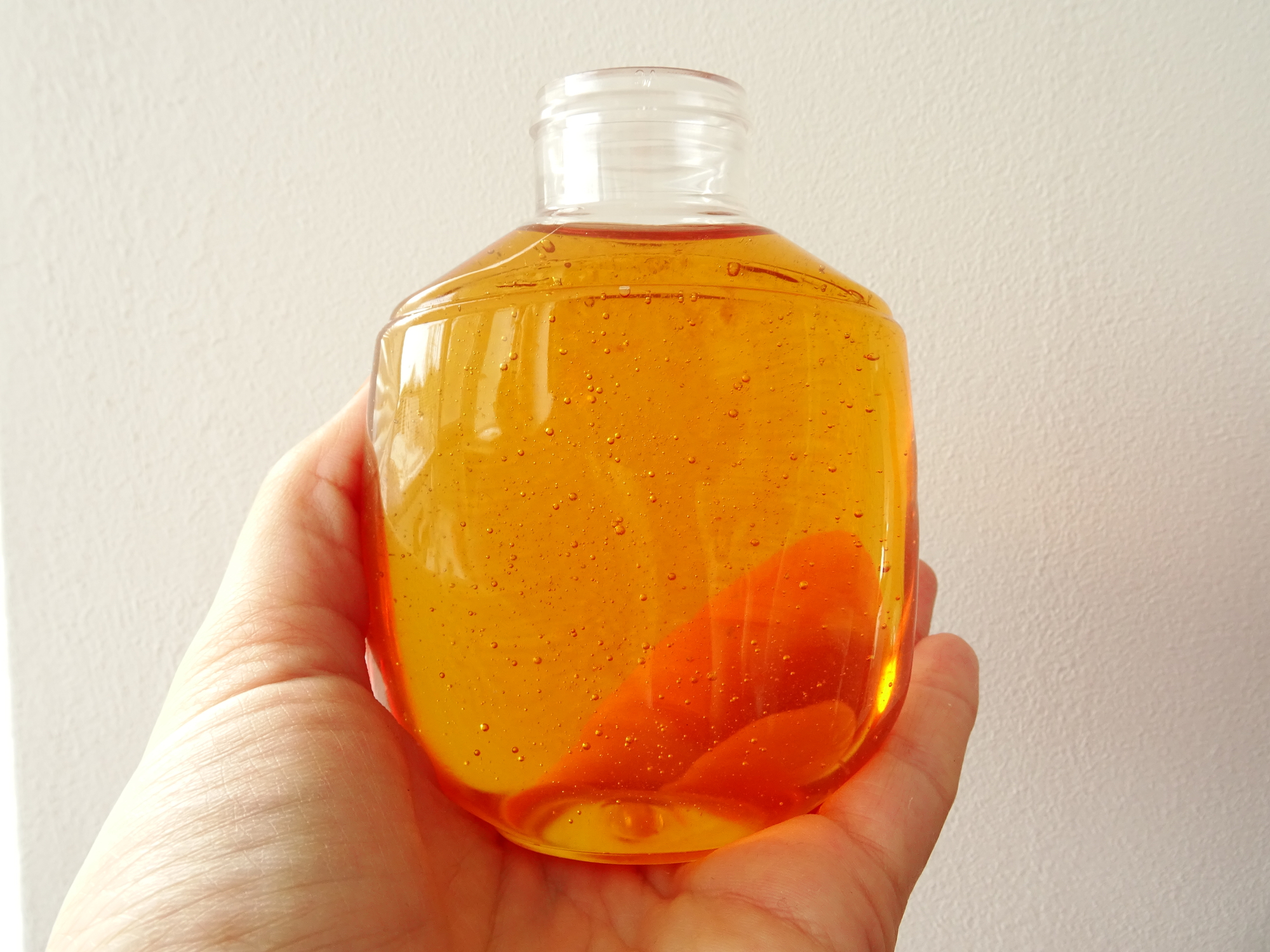
Chef-instructor of health-supportive culinary arts at the Institute of Culinary Education, Chayanin Pornsriniyom, describes agave syrup as an amber-colored liquid sweetener made from the concentrated sap of the agave plant.
The agave plant, native to Central and North America, produces delicious sap in its center, which is used to make agave syrup. Agave syrup is vegan (unlike honey) because it is made from plants.
Agave syrup requires 30% less than white sugar to be used as a substitute. The reason? It is significantly sweeter than other syrups.
Therefore, you’ll need less of it to achieve the same sweetness; hence, it is one of the natural sweeteners.
This syrup tastes more subtle and neutral than most other alternatives to white sugar.
It won’t overpower other components in your recipes, preserving their overall color and flavor.
It’s a very well-liked option for recipes like marinades, baked goods, sauces, and beverages.
However, bakers should be aware that using agave nectar in baking will cause baked items to brown more quickly in the oven.
To prevent excessive browning, you may wish to adjust [the] oven temperature by 5 to 10 degrees,” explains Pornsriniyom.
Agave nectar does not require refrigeration but should be stored in a cool, dark place and appropriately sealed to prevent crystallization.
When using agave nectar in recipes, it’s essential to consider its sweetness level and adjust quantities accordingly.
Ultimately, the choice of sweetener depends on personal taste preferences and dietary considerations.
4. Stevia

Stevia is a natural sweetener derived from the leaves of the Stevia rebaudiana plant (candy leaf), which is native to South America.
It has gained popularity as one of the types of natural sweeteners due to its intense sweetness.
It is incredibly sweet, often many times sweeter than sucrose. The sweetness is primarily attributed to compounds called steviol glycosides, with the commonest one being stevioside.
Stevia also has a low glycemic index. It is considered a non-caloric sweetener because it contains negligible calories.
Stevia is an alternative option for those who want to reduce calorie intake to manage their weight. People with diabetes also use it.
Also, this natural sweetener is available in various forms, including liquid, powdered, and stevia-based sweeteners and blends. Some products may contain other ingredients to improve texture or flavor.
The taste of stevia can have a slightly bitter or licorice-like aftertaste for some individuals.
The aftertaste may be less noticeable when stevia is blended with other ingredients.
Additionally, unlike powdered stevia, Liquid stevia drops are convenient for adding sweetness to beverages like coffee, tea, and smoothies.
When using stevia as a sweetener, it’s essential to experiment with the quantity to find the right level of sweetness for your taste preferences.
Due to its intense sweetness, a little goes a long way, and an excess amount may ruin your dish.
5. Date Syrup

Date syrup, or date honey or date molasses, is a natural sweetener made from dates.
It is used in desserts, breakfast items, beverages, salad dressings, marinades, and glazes.
It is made by grinding and puréeing dates. The mixture is then simmered until it thickens into a syrup-like consistency.
Production of date syrup may involve straining the mixture to remove any solids.
Date syrup is naturally sweet, primarily due to the natural sugars found in dates, such as glucose and fructose.
However, it is less sweet than other natural sweeteners, like honey or maple syrup.
It also contains essential compounds, including potassium, magnesium, and iron.
This syrup is suitable for vegans and vegetarians, as it is plant-based and does not involve animal products, unlike honey.
6. Coconut Sugar
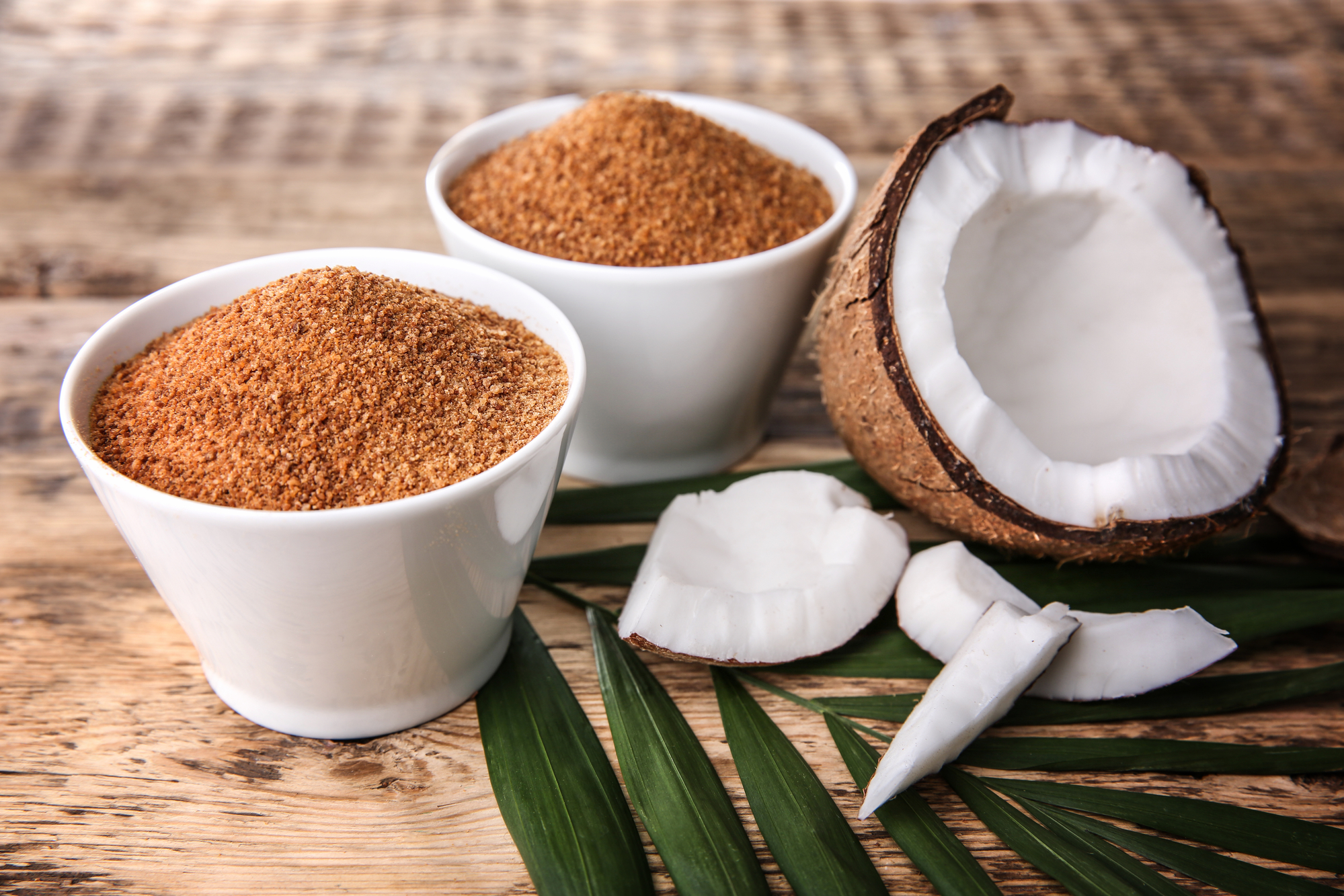
Coconut sugar is a natural sweetener that contains some nutrients and antioxidants.
Coconut sugar is a natural sweetener in baking, cooking, and beverages. Unlike honey and maple syrup, coconut sugar is not a common option.
It has a caramel-like flavor with a hint of butterscotch. Its flavor is usually more complex and less sweet than white sugar.
Coconut sugar primarily comprises sucrose, with small amounts of glucose and fructose. It also contains zinc and antioxidants.
Coconut sugar is considered a natural sweetener because it is minimally processed and does not typically contain additives or preservatives. It is often available for use in granulated and liquid forms.
It is suitable for vegans and vegetarians since it is derived from the sap of coconut palm trees.
Coconut palm trees are sustainable because they require minimal water and can produce sap for an extended period.
Lastly, this sugar should be stored in a cool, dry place and appropriately sealed to prevent moisture absorption and clumping.
Like all other sweeteners, coconut sugar is appreciated for its unique taste and nutritional benefits.
7. Molasses
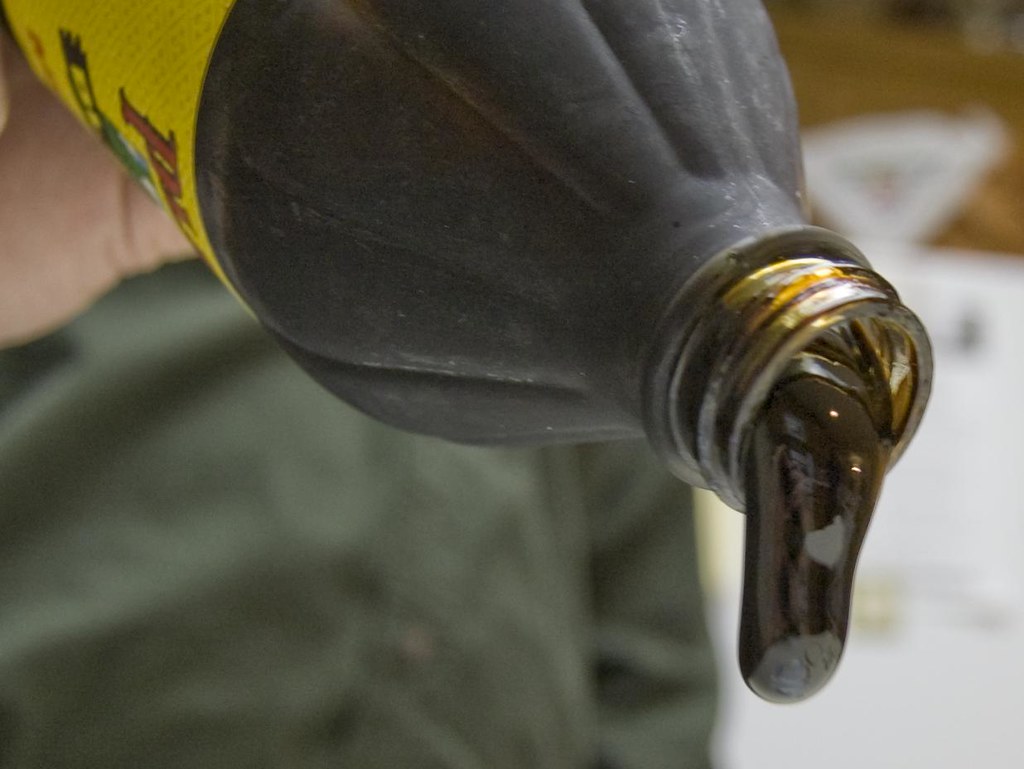
Molasses is a byproduct of the sugar-refining process. It is rich in minerals and has a robust, bittersweet flavor.
Different types of molasses exist, each with varying sweetness levels and nutrient profiles.
Molasses has been used for tens of decades, so it is safe to say that it is one of the ancient types of natural sweeteners. It is also a flavoring agent in various culinary applications.
It is produced by extracting the juice from sugar cane plants. The juice is then boiled down to concentrate the sugars, producing a thick syrup with a deep color and flavor.
There are different types of molasses, each with peculiar degrees of sweetness and flavor.
The most common types include:
- Light Molasses: Light molasses is the first syrup produced during sugar extraction. It is the most delicate color, has a mild sweetness, and has a slight caramel flavor.
- Dark Molasses: Dark molasses is made from a second sugar cane or sugar beet juice boiling. It is darker and has a more robust flavor with noticeable caramel notes.
- Blackstrap Molasses: This type is produced due to a third boiling. It is the darkest and thickest type of molasses and has a robust, somewhat bitter flavor. It is also the most nutrient-dense type, containing tangible vitamins and minerals.
Molasses have a unique flavor often described as rich, earthy, and slightly bitter.
They also contain small quantities of essential nutrients, such as iron, calcium, magnesium, and potassium.
Blackstrap molasses is particularly rich in these minerals. It is also used in baking, especially gingerbread, molasses cookies, and dark bread.
Molasses is used in savory dishes, such as barbecue sauces and marinades. It adds depth and sweetness to your dish.
They have a long shelf life as long as they are appropriately sealed to prevent moisture absorption and crystallization.
8. Lucuma Powder
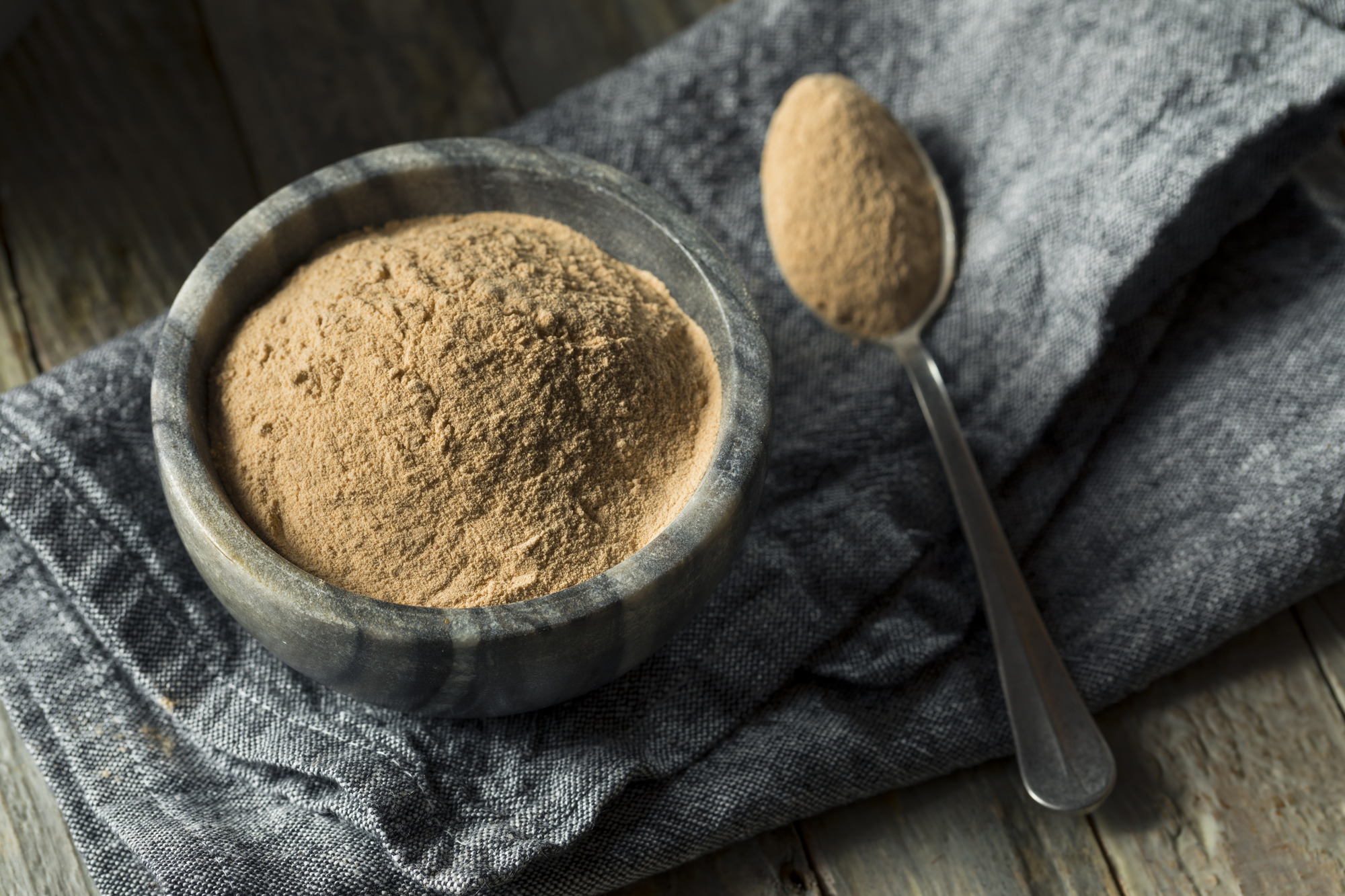
Lucuma powder is made from the dried and milled fruit of the lucuma tree, which is native to South America.
It has a sweet, maple-like flavor and is rich in beta-carotene. It is commonly used in smoothies, desserts, and baked goods.
This powder can also be added to yogurt and hot beverages, as its taste is often rich and creamy.
However, It is less sweet than other natural sweeteners like sugar or honey. Therefore, you may need to use more to achieve the desired level of sweetness.
It is famous for its nutritional content. It is a notable source of vitamins, particularly beta-carotene (a precursor to vitamin A), and minerals like iron and potassium.
Lastly, it is suitable for vegans and vegetarians, as it is derived from a fruit and does not involve animal products.
It should be stored in a cool, dry place and appropriately sealed to prevent moisture absorption.
9. Monk Fruit Extract
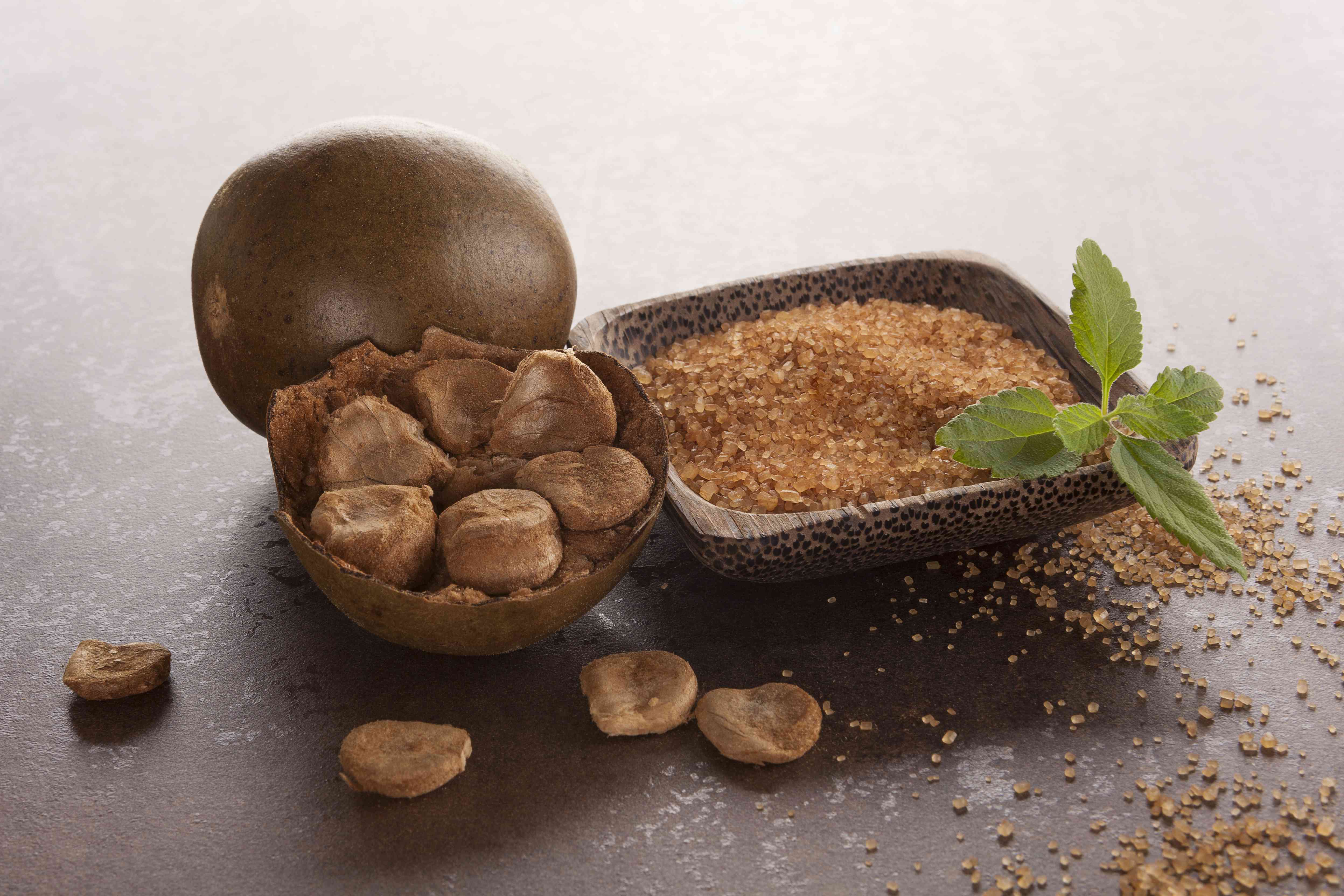
Monk fruit extract, or luo han guo extract, is a natural sweetener derived from the monk fruit (Siraitia grosvenorii), a small green gourd native to Southeast Asia.
Monk fruit has cultural and historical significance in Chinese culture.
Its extract is gaining popularity as a natural sweetener due to its intense sweetness and minimal impact on calorie and sugar intake.
Luo han guo extract is delightful, often hundreds of times sweeter than sucrose.
Furthermore, this extreme sweetness is primarily attributed to compounds called mogrosides, especially mogroside V.
Monk fruit extract is virtually calorie-free and contains insignificant amounts of carbohydrates.
Thus, it is an attractive option for those looking to reduce calorie intake or manage their weight.
It is also suitable for ketogenic diets. It is versatile because it can be used as a sugar substitute in various culinary applications.
It is also available in multiple forms, including liquid drops and powdered extracts.
Lastly, monk fruit extract is heat-stable, making it suitable for cooking and baking.
When exposed to very high temperatures, it does not break down or lose sweetness.
10. Yacon Syrup
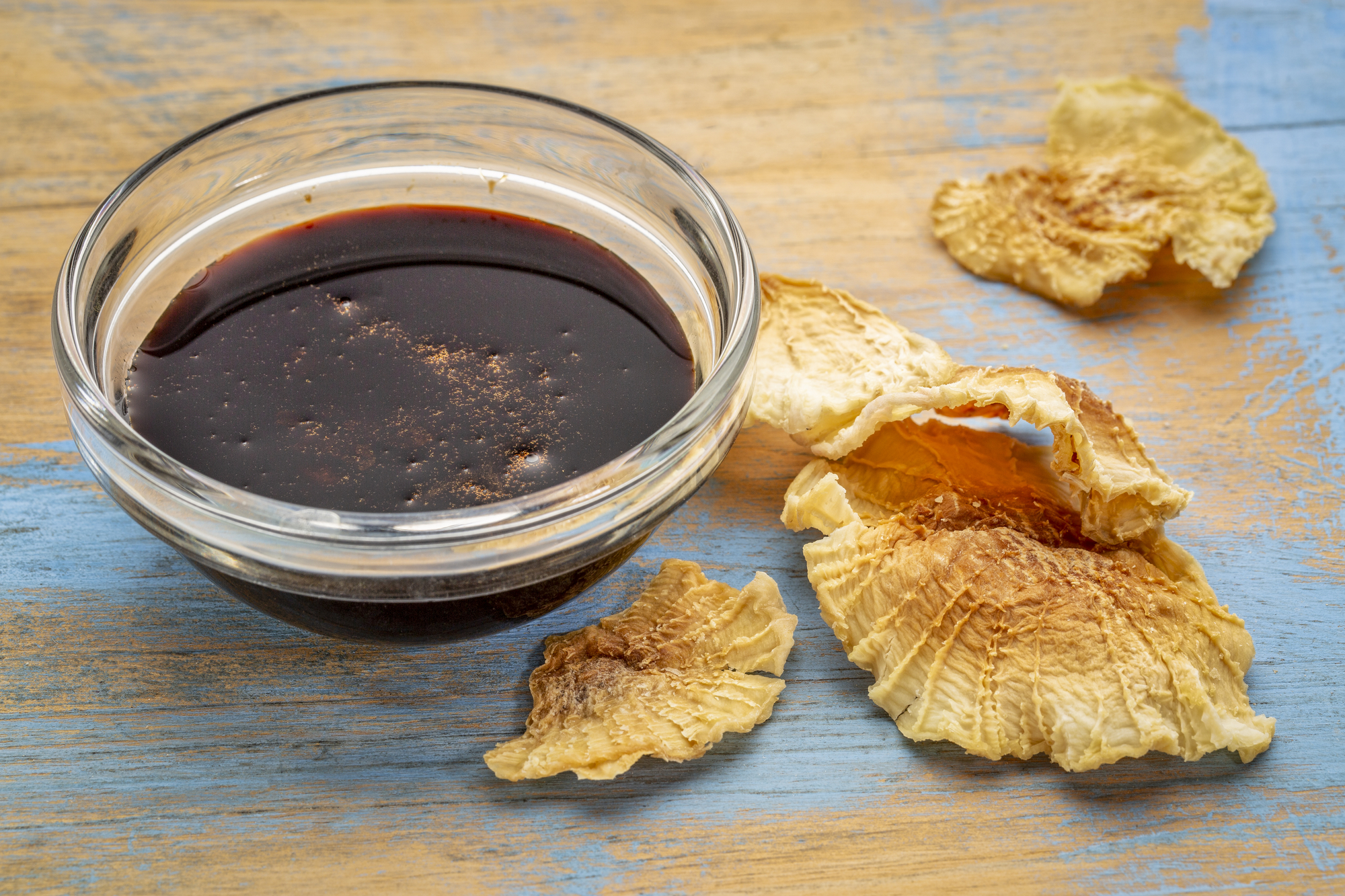
Yacon syrup is made from the tubers of the Yacon plant, which are native to South America. It contains inulin, which has potential health benefits.
It is produced by extracting the juice from the yacon root. It is then concentrated through evaporation, producing a thick, dark, sweet syrup.
It is naturally sweet due to the presence of a type of sugar called fructooligosaccharides (FOS).
FOS are naturally occurring sweet carbohydrates not fully digested by the body.
Thus, they are relatively low in calories compared to other sweeteners because the body does not completely absorb the FOS they contain.
Also, it has a low glycemic index. People with diabetes or those who often use it to monitor their carbohydrate intake.
Yacon syrup is also considered a prebiotic because it contains FOS, which can promote the growth of beneficial gut bacteria.
Yacon syrup can be a healthier alternative to refined sugars in many recipes.
It is appreciated for its unique taste and nutritional benefits, but like all other sweeteners, it should be eaten in moderation.
11. Brown Rice Syrup
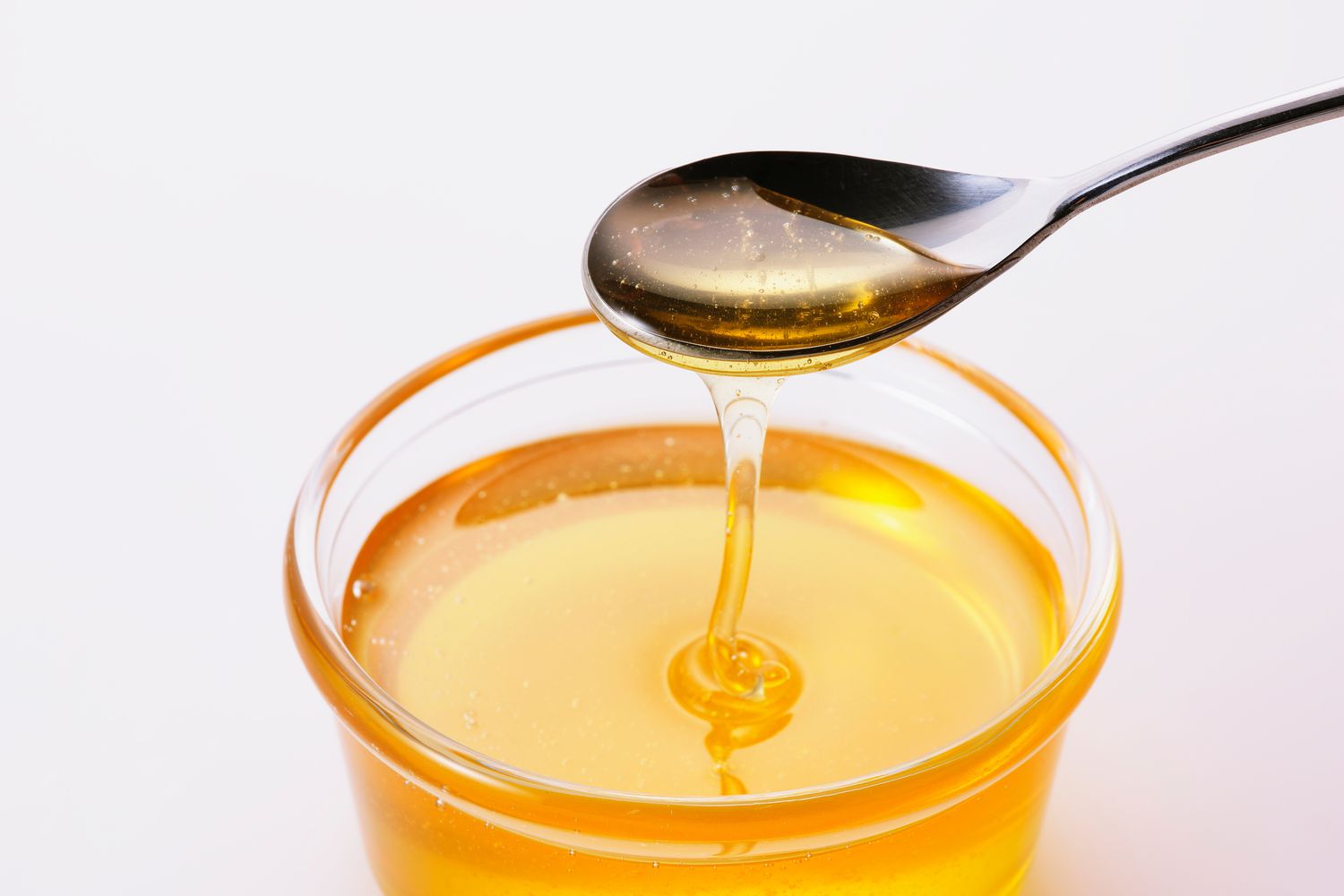
This syrup is also one of the many natural sweeteners made from cooked brown rice that has been broken down into sugars.
It has a soft, butterscotch-like flavor and is often used in baking and as a sweetener in some health food products.
Its texture is similar to honey or corn syrup. It also helps retain moisture in baked goods, making them softer and chewier.
It can be used in a wide range of recipes, such as topping pancakes or waffles, energy bars, or sauces and dressings.
Some studies have raised concerns about arsenic levels in rice products, including brown rice syrup.
Hence, consuming rice in moderation and diversifying your sweetener choices is advisable.
12. Sorghum Syrup
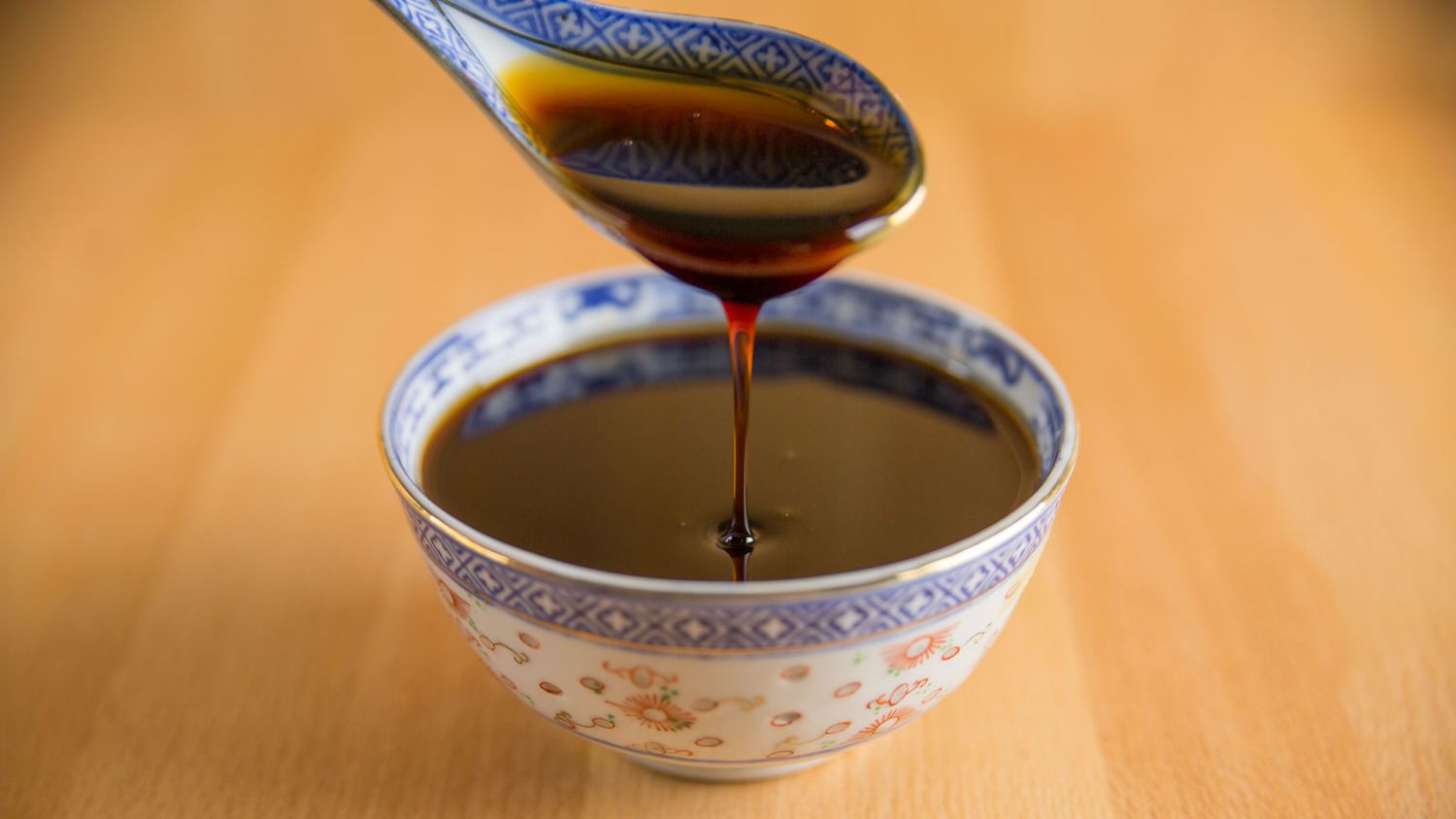
Sorghum syrup, also known as sorghum molasses, is made from the juice of the sorghum plant (Sorghum bicolor). It has a sweet and earthy flavor.
It is commonly used in Southern cooking, especially in making biscuits and pancakes.
Unlike some other sweeteners, this syrup does not crystallize over time.
It also has a unique flavor profile characterized by a sweet, earthy, and slightly nutty taste.
Its flavor is usually compared to molasses or honey.
Sorghum syrup also has an ancient history in Southern and Appalachian cuisine.
It contains some nutrients, including potassium and antioxidants. It is also
gluten-free.
Sorghum syrup is a healthier alternative to other sweeteners because of its glycemic index.
Additionally, sorghum is a drought-resistant crop, which makes it a sustainable and environmentally friendly option for sweetener production.
Sorghum syrup is a versatile and flavorful sweetener appreciated as one of the many natural sweeteners because of its unique taste and regional culinary traditions.
It’s an excellent option for those exploring different types of natural sweeteners and adding a touch of Southern or Appalachian flavor to their cooking.
13. Fruit Purees
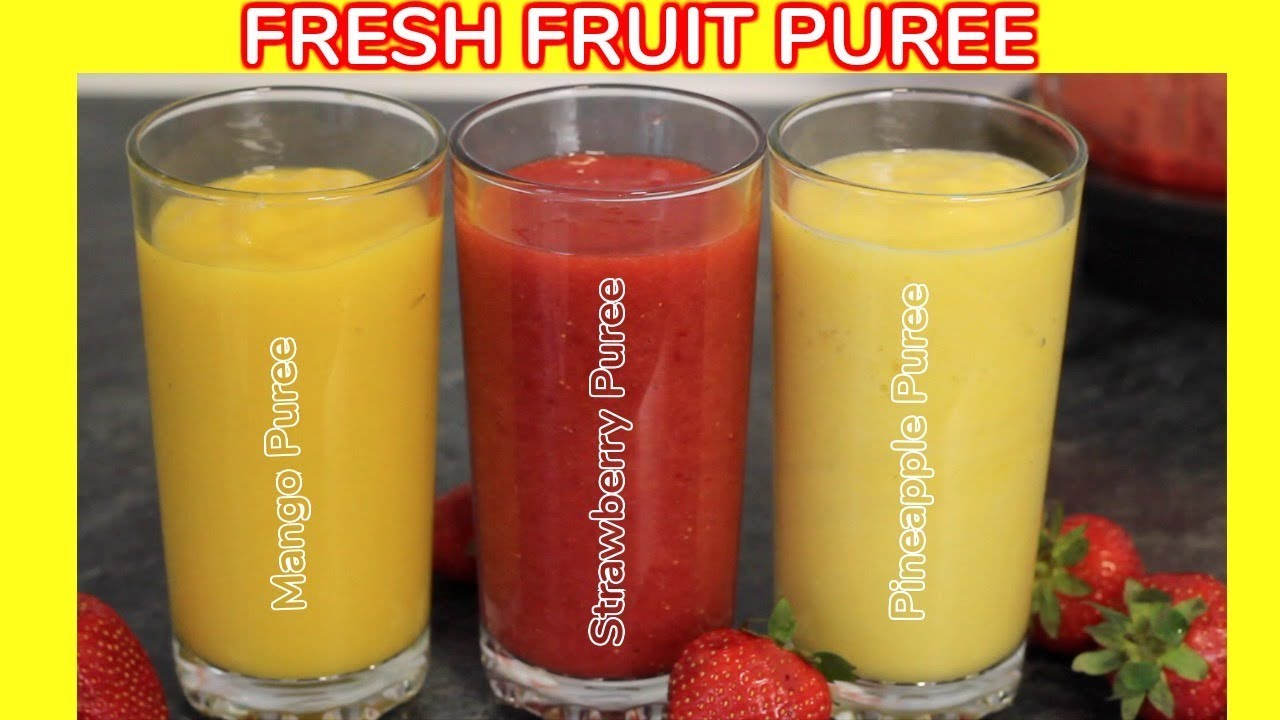
Mashed or pureed fruits, such as bananas, apples, and dates, can be used as natural sweeteners in recipes.
Fruit purees are one of the common types of natural sweeteners.
They contribute natural fruit flavors and moisture to baked goods. They can be used in a wide range of culinary applications.
Pear sauce (which is similar to applesauce) is made from cooked and pureed pears.
In recipes, it can be used as a natural sweetener and a substitute for applesauce.
Prunes, also known as dried plums, can be pureed and used as a natural sweetener in baking.
The fruit is usually peeled, cored, and cooked to softness to produce a fruit puree.
It can then be mashed or blended until it reaches a smooth consistency.
Some fruit purees are made without cooking and are combined with raw fruits.
Fruit purees have a smooth and creamy texture, which makes them ideal for various culinary uses. The sweetness of a fruit puree depends on the fruit used.
It also depends on whether other sweeteners are added during the preparation process.
Some fruit purees are naturally sweet, while others may be sour or tart.
They are often used as baby food because they provide essential nutrients and are easy on the digestive tract of infants.
They can also be preserved through canning or freezing to extend their shelf life.
Lastly, they retain much of the nutritional value of the original fruit, such as vitamins, minerals, and dietary fiber.
14. Cinnamon

This is a well-known spice popular for its warm and sweet flavor. It is derived from the inner bark of trees belonging to the Cinnamomum genus.
Ground cinnamon is often used to add natural sweetness and flavor to dishes like oatmeal, desserts, beverages, etc.
There are two main types of cinnamon, which are:
- Cassia Cinnamon (Cinnamomum cassia): This is the most common type. It is found in most grocery stores. It has a robust and spicy flavor and a reddish-brown color. Cassia cinnamon is commonly used in baking and cooking.
- Ceylon Cinnamon (Cinnamomum verum): This variety is considered “true” cinnamon and is known for its delicate and sweet flavor. It has a thinner bark and lighter color and is more expensive than cassia cinnamon. Ceylon cinnamon is often used in desserts, beverages, etc.
Cinnamon should be stored in a cool, dark place to maintain its flavor.
Ground cinnamon can lose potency over time, so using it within a year or two is best.
Cinnamon is a common ingredient in spice blends, such as pumpkin and chai. It is a dynamic spice with a wide range of culinary applications.
It is a cherished flavoring ingredient in many cultures and cuisines.
15. Sweet Potatoes

Sweet potatoes are naturally sweet and can be used as a natural sweetener in recipes like pies, casseroles, and smoothies by incorporating them.
Sweet potatoes are also a source of vitamins and fiber. Thus, they are healthy and serve as one type of natural sweetener.
These are some ways you can incorporate sweet potatoes into a dish:
- Mashed Potato: Catching cooked sweet potatoes into recipes adds sweetness and moisture. They are commonly used in sweet potato pies, casseroles, and muffins. Mixing mashed sweet potatoes with your morning oatmeal can add a natural sweetness and extra creaminess.
- Sweet Potato Puree: Pureed sweet potatoes can be used as a substitute for some or all of the sugar in recipes for baked goods like cookies, brownies, and pancakes.
- Soups and Stews: Sweet potatoes can be added to stews and soups to provide a natural sweetness to balance out savory flavors.
- Baby Food: Sweet potatoes are commonly used in homemade baby food as a natural sweetener and nutrient-rich ingredient. When using sweet potatoes as a natural sweetener, you need to adjust the other ingredients in your recipes, such as reducing the amount of sugar or liquid (to account for the moisture content of the sweet potatoes).
Over the years, sweet potatoes have become a source of natural sweeteners.
They are known for their health benefits, so people still choose them to date.
In Summary;
There is a wide range of types of natural sweeteners. Thus, you do not always have to rely on sugar as a source of sweetener.
You don’t have to give up sweets to live a healthy lifestyle completely; all you have to do is swap out unhealthy refined sugars and artificial sweeteners for these natural sweeteners and sugar replacements.
Lastly, the critical thing to remember is that natural sweeteners come with their peculiarities.
And while this class of sweeteners may seem harmless, their over-consumption may devastate one’s health.




